Games PC MISTMARE User Manual
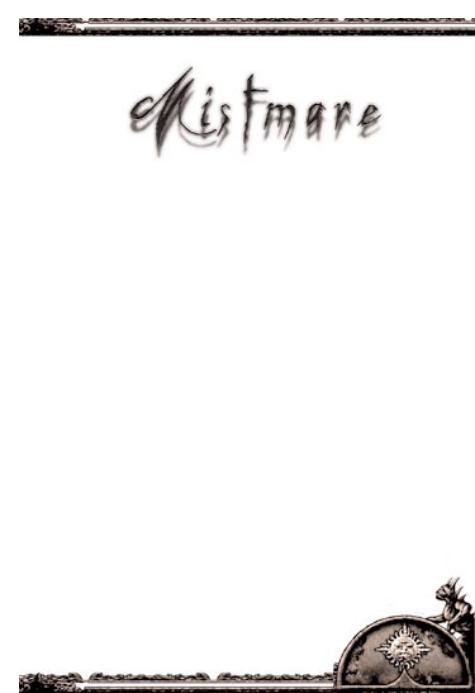
THE WORLD OF MISTMARE |
P 2 |
MISTMARE ON THE INTERNET |
P 5 |
CHARACTER SHEET |
P 6 |
GAME WORLD AND TIME |
P 8 |
ADVENTURING |
P 10 |
ACTION WITH CHARACTERS |
P 11 |
USING THE MAP |
P 12 |
COMBAT |
P 16 |
GAME SETTINGS |
P 24 |
VIEW CONTROL |
P 25 |
KEYBOARD SHORTCUTS |
P 26 |
APPENDIX |
P 28 |
WORLD HISTORY AND WORLD ORDER |
|
POLITICS AND CURRENT WORLD ORDER |
P 31 |
1
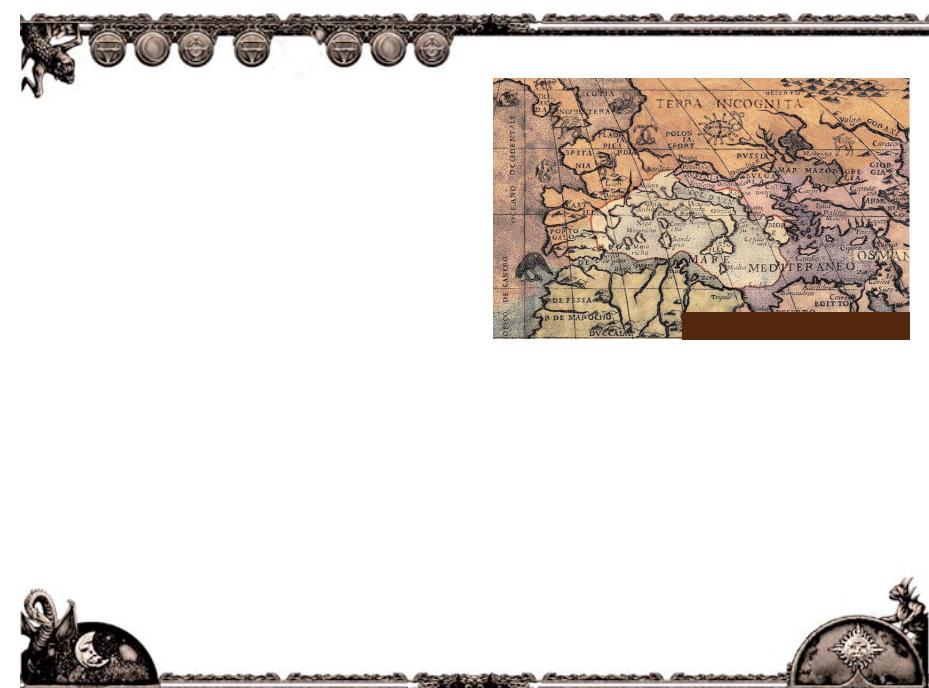
THE WORLD OF MISTMARE
THE HOLY ROMAN REPUBLIC IN 1996 AD
It is near the end of the second millennium. The old continent has been ravaged by 600 years of menace: a horrible fog, destroying the minds of anyone who dares to enter it, is covering most of what was once called Europe. The Fog has claimed the lives of millions and pushed the civilization to the southern lands of the continent. The Holy Roman Republic, the only surviving state in the southern part of the continent, has been unable to fight the Fog, although it has been practicing powerful and useful liturgical magic for hundreds of years. In the 13th century, the Church has been able to eliminate the plague epidemic using its then-powerful Link towers, a spell-casting mechanism connecting all major European cathedrals, but has been since able only to create a volatile northern border, preventing the Fog to spread to its southern lands.
Today the Holy Roman Republic is isolated: to the north, the Fog prohibits all passage. Anyone wandering into the Fog has never returned, their minds destroyed by the Fog.
Towns that border the Fog are protected with harmonic tolling, a magical spell cast using magically crafted church bells. To the south and east, warring nations of Northern Africa and Middle East make trade and communication extremely difficult.
To the west, the Fog has spread to the seas and prevents sea travel. No ships that have sailed through the Straits of Gibraltar to the west have ever returned. The self-contained Holy Roman Republic, ruled by the Church, enjoys relative prosperity, although significantly underdeveloped compared to the rest of the world. The state lives in feudalism; the Church, using its armed forces and the Inquisition, a special branch of sorcerer monks, controls the lives of people. Simple folk endure and assure each other that one day, The Prophecy, foretold of old, shall come to pass and the continent will be saved. Periodically, peasant revolt to try and shake the iron
rule, but all are crushed.
2 |
3 |
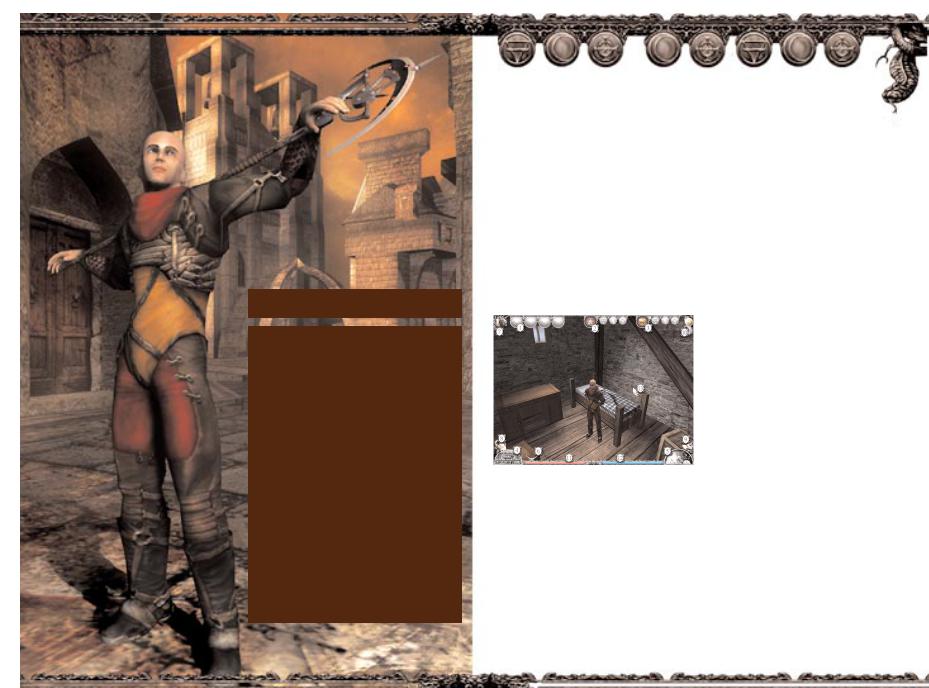
YOUR CHARACTER - ISADOR
The last peasant revolt against the Church occurred in the northeastern realms of Carniola in 1978. After the clash between the peasant force and the Church army, the peasant leaders retreated to the edge of the Fog. When the scouts reached their camp, they found no survivors - except for a raving old man and a crying baby. The Church soldiers delivered the baby boy to a local orphanage. The nuns of the orphanage named the baby Isador - after a local saint, renowned for his good deeds. At the age of 18, Isador leaves the orphanage.
Driven by a strong desire to serve God, which had saved him from the horrors of the Fog, he enrolls in the Church army corps. During his training in the south of Spain, Isador comes into mortal danger, but saves himself by using magical powers, hidden until this point. He is transferred to the magic academy of Athens, where he is trained by the Church liturgical sorcerers, and attains the rank of brother Inquisitor - a kind of sorcerer monk order that serves as a special force for solving the more delicate problems of the church.
MISTMARE ON THE INTERNET
THE OFFICIAL MISTMARE SITE IS http://mistmare.arxeltribe.com
Make sure you visit it to check for game updates (problem-fixing patches and new options) forums, and additional background information on the game and its world.
USER INTERFACE BASICS
When the game loads, the user interface shows a three-dimensional view of the world, which is presented in the main part of the screen. The game can be controlled solely by mouse, or with the help of keyboard shortcuts.
THE BASIC USER INTERFACE
1.Adventuring interaction/combat school selection slots
2.Offensive spellcasting
3.Enhancement spellcasting
4.Calendar
5.Time of day
6.Utility belt slot
7.Character sheet
8.Inventory
9.Questlog
10.Map
11.Health bar
12.Stamina bar
13.Cursor
Basic character movement and selection
Character movement and selection of interactive spots is done using the mouse or the keyboard. If using the mouse, the following two rules apply:
•Left-clicking the mouse button SELECTS the object (item, exit, character) under the current cursor position, enabling you to perform actions with it
•Right-clicking the mouse button directs the character to WALK (or RUN, if the spot is far away) to the desired spot.
You can also move the character using the keyboard. Refer to the key mappings section for more detail.
Interactive objects
You can interact with any active objects in the environment (exits, props, characters). When you move the mouse cursor (arrow) over an interactive object, the cursor will change to indicate a possible action. If notthe cursor does not change, that object is not interactive at the moment (but might be at a later time).
Interface functionality
The control part of the interface is divided into two sections. The upper part provides tools (icons) for adventuring (search, dig, pick locks, etc.), combat control, and spellcasting, while the lower part provides the utility belt (which contains items and harvesting gems), as well as indications of health, stamina, and game lengh.
The four gargoyles in the corners of the screen are quick shortcuts to the character sheet, map, inventory, and the quest log/journal.
You select any function of the main user interface by left clicking on the required icon. When the character sheet, inventory, or quest log options are selected, their respective windows appear over the screen.
4 |
5 |
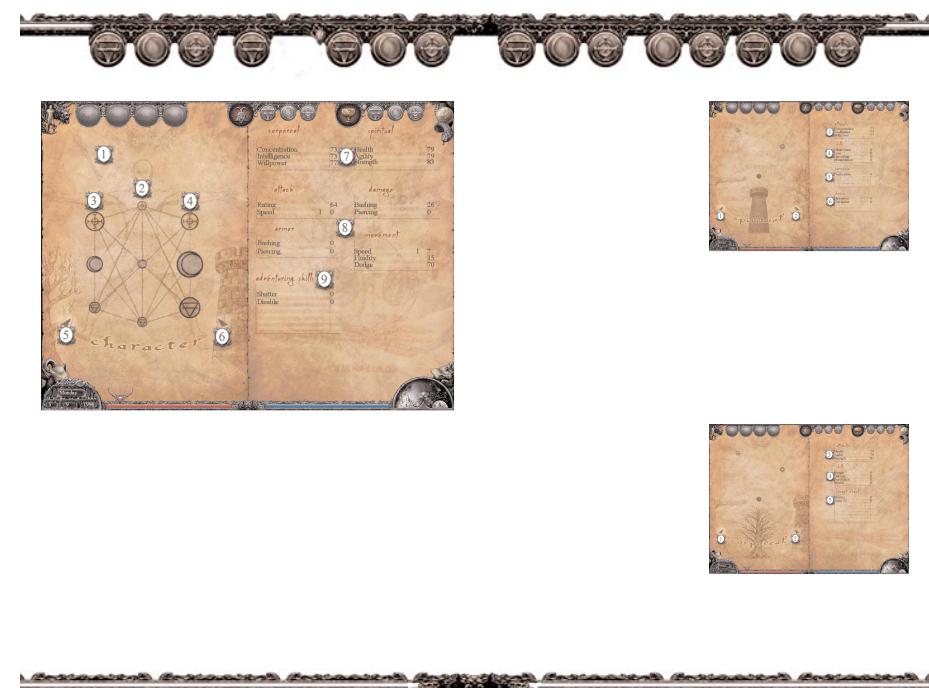
CHARACTER SHEET
The character sheet provides insight into the current attributes (properties) of the player character, such as health or strength, as well as the skills the character possesses.
The character sheet is invoked by pressing the “CHARACTER SHEET” key (by default, “S”) or left clicking on the top left gargoyle in the main user interface screen.
The main character sheet illustrates a quick look at the most important character attributes, which are created by the three Spheres of Life: the Solar, Lunar, and Terran Sphere. The left pane shows the spherical chart of your character (the primary statistics), and the right pane shows the derived (secondary) statistics.
6
THE CHARACTER SHEET WINDOW
1.Character alignment
2.Character spheric affinity
3.Character spheric focus
4.Character spheric resistance
5.Corporeal aspect view
6.Spiritual aspect view
7.Basic attributes
8.Combat attributes
9.Adventuring skills
The size of the nine circles in the left pane indicates the quantity of an attribute it represents – the larger the circle, the more the attribute is present with the character.
The nine circles are sorted horizontally in three groups
• The three circles on the far left (icons of sun, moon, and earth) represent the ability that the character has with solar, lunar, and terran sphere. The focus gives you a bonus to liturgical spells of the appropriate magic school. A character with a high lunar focus will use lunar spells with stronger effect.
•The middle three circles represent the affinity of the character towards the three spheres of life. These, together with the aspect of the character, are used to produce the secondary statistics (agility, health, strength, intelligence, concentration, willpower), which are displayed in the right pane.
•The three circles on the right represent the resistance of the character towards the three spheres. Sphere resistance decreases the effects of aggressive spells of that sphere cast on the character.
On the right pane, all secondary statistics (derived from the spheres and aspects), combat attributes, and adventuring skills are represented in a quantitative or symbolic (bars and symbols) form. Each attribute (such as health or concentration) is shown with its level (the numeric value or alternatively, the number of symbols shown in the upper part of the rectangle) and the proficiency within that level (the second numeric value or, alternatively, the growing bar underneath).
SHOWING YOUR ASPECTS
You can “drill down” to determine how spiritual and corporeal aspects of your character combine with your sphere attributes by clicking on the TREE (corporeal aspect) or the TOWER (spiritual aspect).
The spiritual aspect defines your mental abilities, which are
•The concentration, intelligence, and willpower attributes
•The observation, lore, harvesting, and manipulation skills
•The schools of magic spells (shrieks and harmonies in liturgical magic) your character has learned)
You can return to the main character sheet screen or to the corporeal aspect view by left clicking on the BODY or TREE pictures respectively.
SPIRITUAL VIEW OF THE CHARACTER SHEET
1.Back to character sheet window
2.Corporeal aspect view
3.Derived spiritual attributes
4.Spiritual skills
5.Enhancement schools of magic
6.Offensive schools of magic
The corporeal aspect defines your corporeal abilities, which are:
•The health, agility, and strength attributes
•The ranger, acrobatics, defense, and stealth skills
•The schools of combat your character has learned
You can return to the main character sheet screen or to the spiritual aspect view by left clicking on the BODY or TOWER pictures respectively.
CORPOREAL VIEW OF THE CHARACTER SHEET
1.Back to character sheet window
2.Spiritual aspect view
3.Derived corporeal attributes
4.Corporeal skills
5.combat schools
7
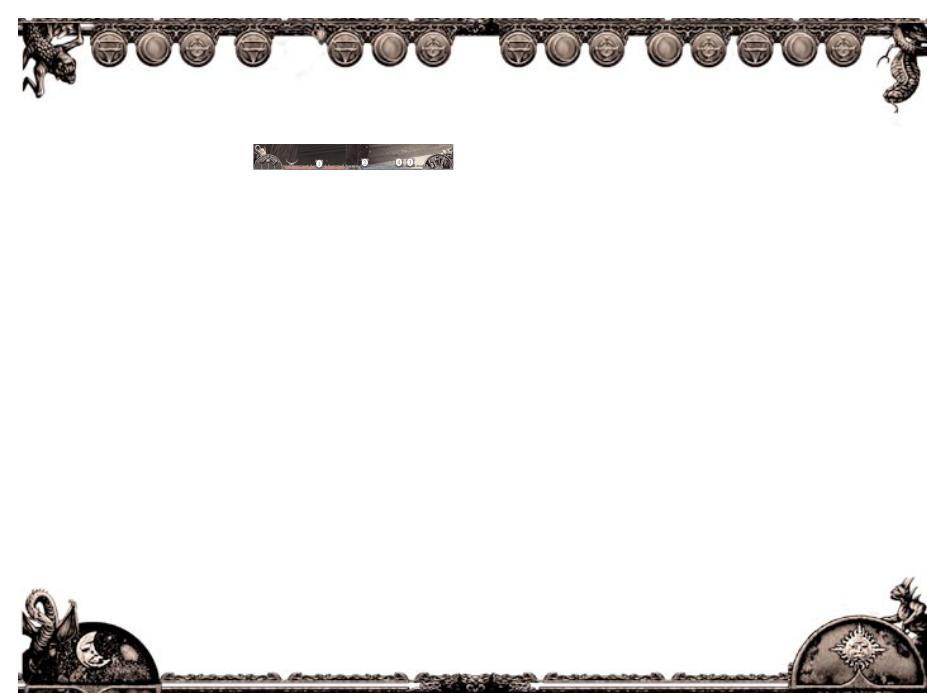
IMPORTANT PLAYER COMBAT PROPERTIES
The two most important player properties in combat are health and stamina, which are always shown in the main user interface as the red (health) and blue (stamina) bars at the bottom of the screen respectively.
Health
The health (red) bar is diminished when you are hit by enemy strikes or spells, and automatically grows when you rest. When the health bar is exhausted, you will fall unconscious and wake up in the home location of the current episode.
Stamina
The stamina (blue) bar defines your current ability to strike an opponent, or cast a spell.
You will spend stamina with combat actions, and different schools of combat, and different spells have different levels of stamina burn (usage).
If your current level is too low for a particular strike or spell, you have to wait for your stamina level to grow, or choose a less demanding offensive or defensive move.
Current stamina and stamina limit
The stamina bar indicates two important aspects: the current stamina (deep blue color), and the current stamina limit (pale blue color). The stamina limit indicates the maximum stamina your character can have at any given time.
Stamina is used to determine the capability to strike in combat. Stamina is decreased when using combat strikes. The stamina grows automatically, when the character is not attacking.
The stamina limit is used to determine the capability to cast spells and perform adventuring actions. Therefore, the current stamina limit is decreased when using spells or adventuring actions. The stamina limit grows automatically when the character is not performing an activity, and can be increased ondemand through
resting (described
8
in the “Time Passage and Time Management” section of this manual).
HEALTH AND STAMINA INDICATORS
1.Health bar
2.Stamina bar
3.Current stamina limit indication
4.Current stamina indication
Reference Chart
The reference chart gives you an overview and explanation of the three Spheres of Life and the connections between all derived statistics and character properties. You can examine the reference chart by pressing the REFERENCE (BACKSPACE) key.
PLAYER DEATH
The good news is that you cannot die in the Mistmare world. When your health drops to a minimum level, you will fall unconscious and wake up in the starting point of the current episode.
If you lose a fight, you are able to regain your health while visiting certain areas to improve your combat and magic skills. You can then, try combat again using your newly acquired powers.
Hint: If you win a fight, the defeated opponent will usually leave some items behind for you to pick up as a reward (explore the defeated enemy by clicking on interaction on the corpse).
GAME WORLD
AND TIME
EPISODES
The game is divided into episodes, each of which represent independent parts of the game storyline. Each episode is usually set into a city, but you can not proceed to the next episode until the goals of the current storyline are met.
LOCATIONS
Locations are separate parts of Mistmare world (such as city streets, barber shops, blacksmith huts, and the like), which are entered and exited through entrances and exits.
FOG ARENAS
Whenever you venture into the Fog, you face the danger of its mind-destroying powers: nightmare creatures appear all around you, and only a warrior of proper skill and abilities can defend himself from such adversaries. Passage through the Fog is represented with Fog arenas in the world of Mistmare.
Fog arenas are special locations, which appear as you enter the Fog, either as a part of a side quest, or when traveling between cities. A Fog arena is a world turned dead, full of unknown traps and creatures. You are required to safely exit the arena and proceed on your journey, only if you manage to survive it, of course. Fog arenas are exited via visible arena exits.
Time passage and time management
In Mistmare, time passes only when certain timeconsuming actions occur between the character and the world. This means that no time passes when you simply stand in the street, or perform less demanding actions, such as talking to characters, or when fighting enemies. On the other hand, picking a lock, meditating at a shrine, or using the sleeping bag will time.
Time passage is indicated on the date and time corners in the lower bar of the main screen. The left corner displays the current date, and the right corner represents the time of day, and is animated to indicate time passage accordingly.
Each episode in the game has a fixed maximum number of days (in gametime terms) available to complete it. The storyline goals can usually be met well before this time limit expires, so you are able to use any extra time available to venture on side quests and enhance your character abilities through building points.
Bonus time
If you finish a game episode’s storyline earlier than the episode time limit dictates, you will have additional time available to enhance your abilities with side quests or building points, before you
proceed to the next episode. This is called bonus time, and you might
choose to spend it immediately, or carry it through to the next episode, where it will be added to that episode’s time limit.
When playing the game, you will be asked whether you want to proceed to the next episode. Use this time wisely to prepare for the challenges ahead.
Note: Each extra episode will automatically add some reward bonus days to your bonus time pool.
Time locking
Some of the events in the game are time-dependent, when the game can lock its time, not allowing it to pass beyond a certain limit until the task is met. This forces you to proceed with playing the main storyline, and temporarily prevents non-storyline actions (such as side-quest actions or building point actions until the current storyline goals are met.
Note: When the game locks its time, a message “Time locked” will appear in the main interface. The journal will usually indicate the reason for locking, and instruct you on how to proceed playing the main storyline.
For example, an important character in the game will instruct you to meet him in exactly two days. You might use those two days to read books or pray in the nearby monastery. If you go to the monastery and use the pray action on its altar, a defined time period will pass (say, six hours).
If you repeatedly pray eight times – two days – the game will lock its time and force you to proceed with the storyline the pray option will no longer be available on the monastery altar. After you meet the character, the time will unlock and enable you to proceed freely.
Resting
You can rest by using the standard Inquisitor issue sleeping bag in your inventory. Through resting, you can increase your stamina limit on
demand, at the cost of spending time.
9
